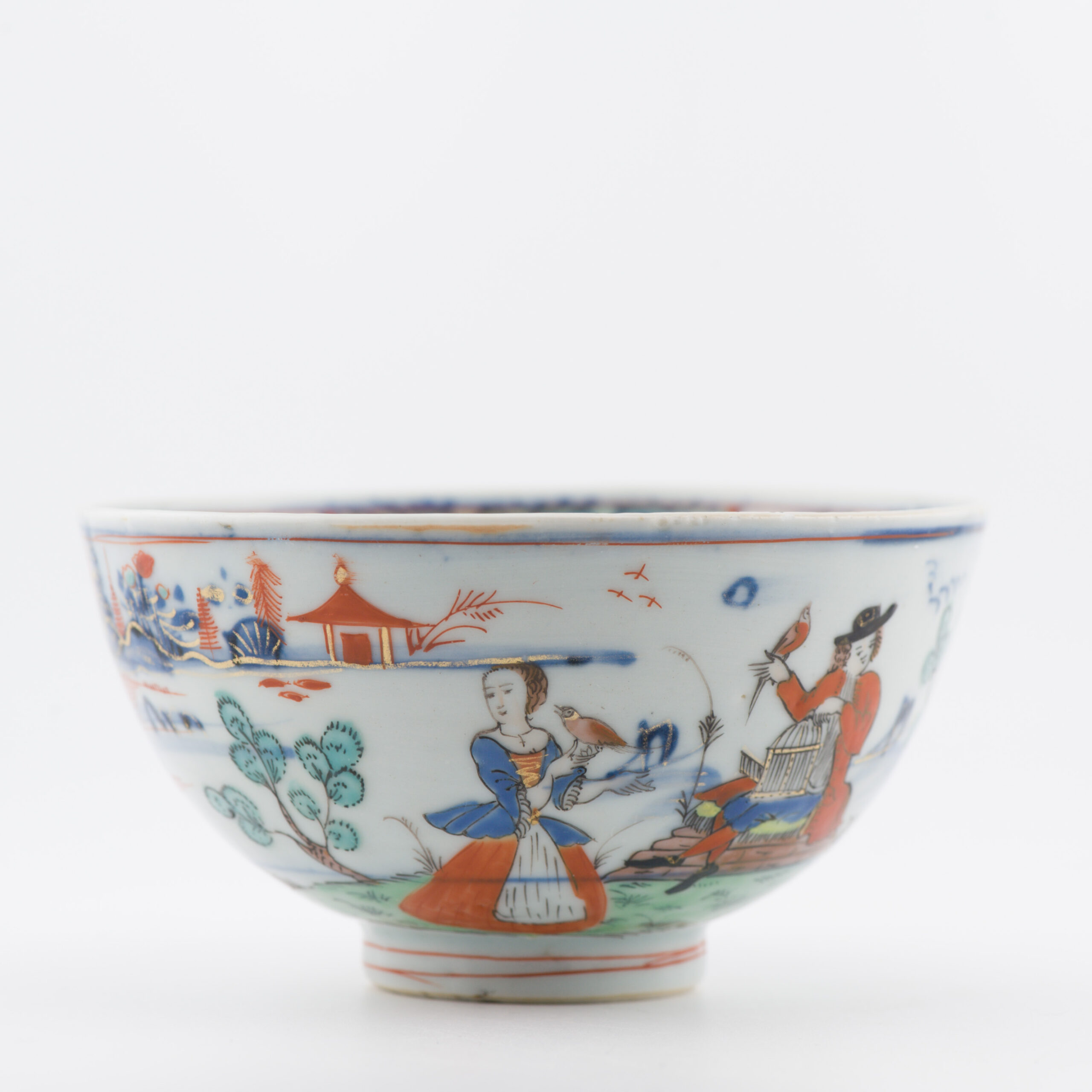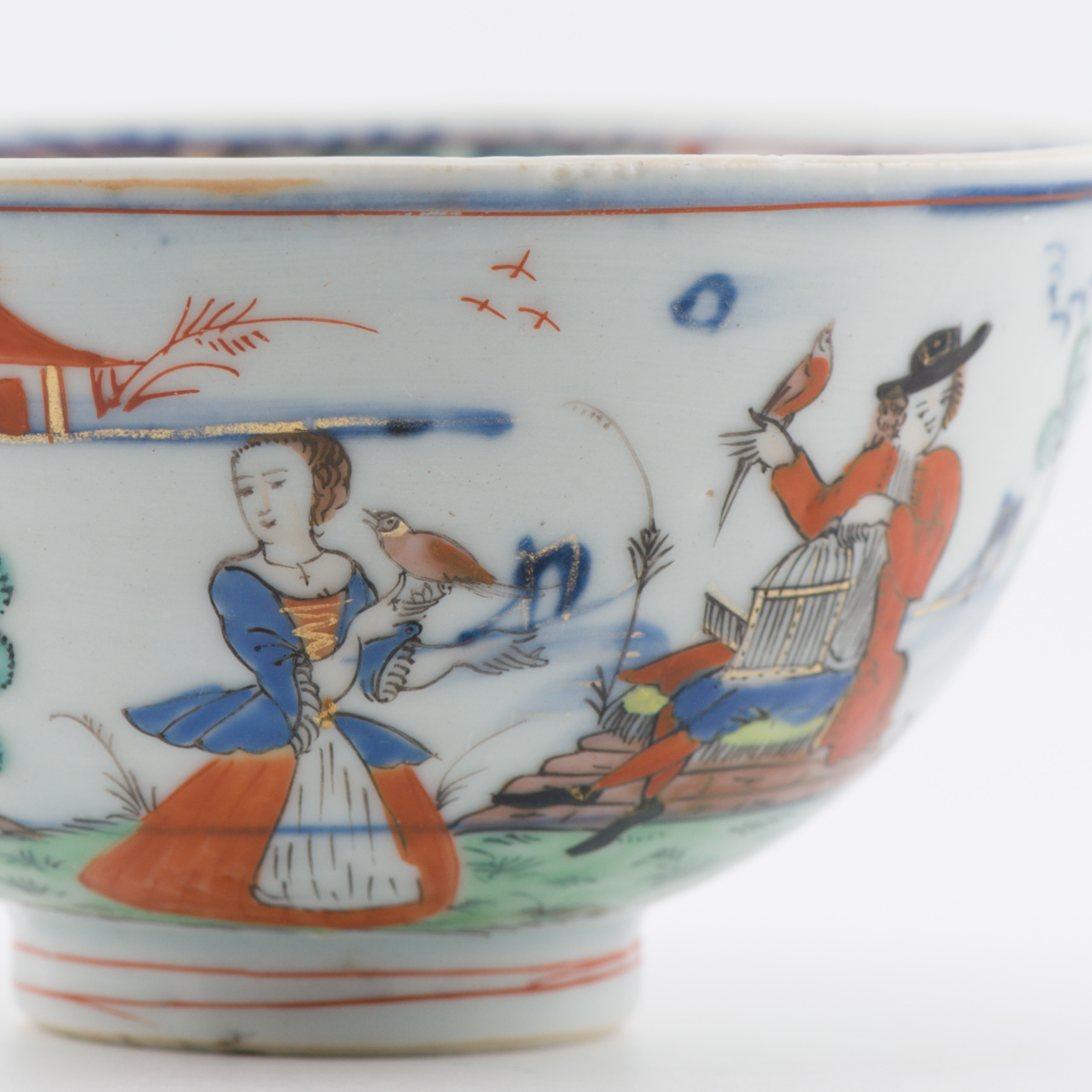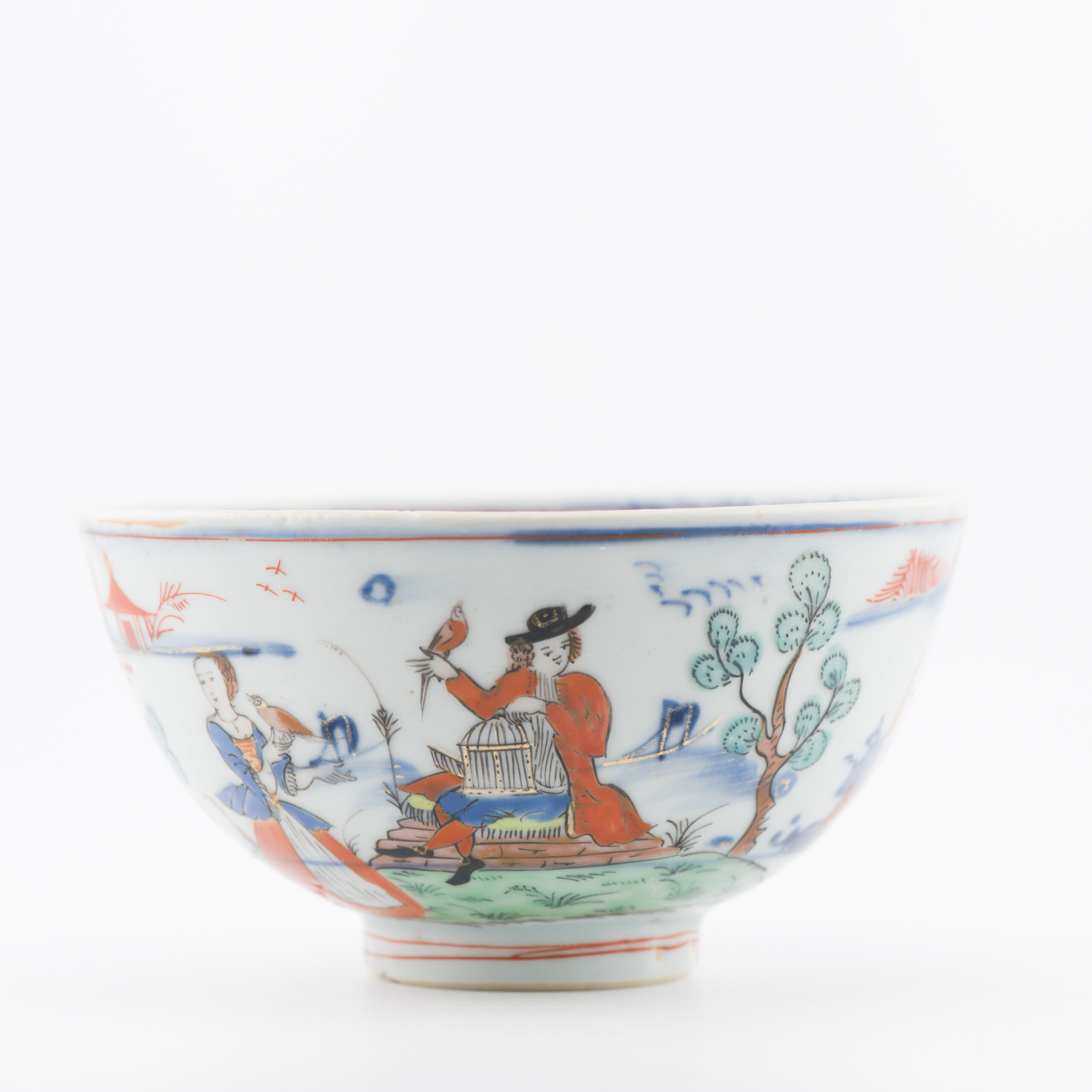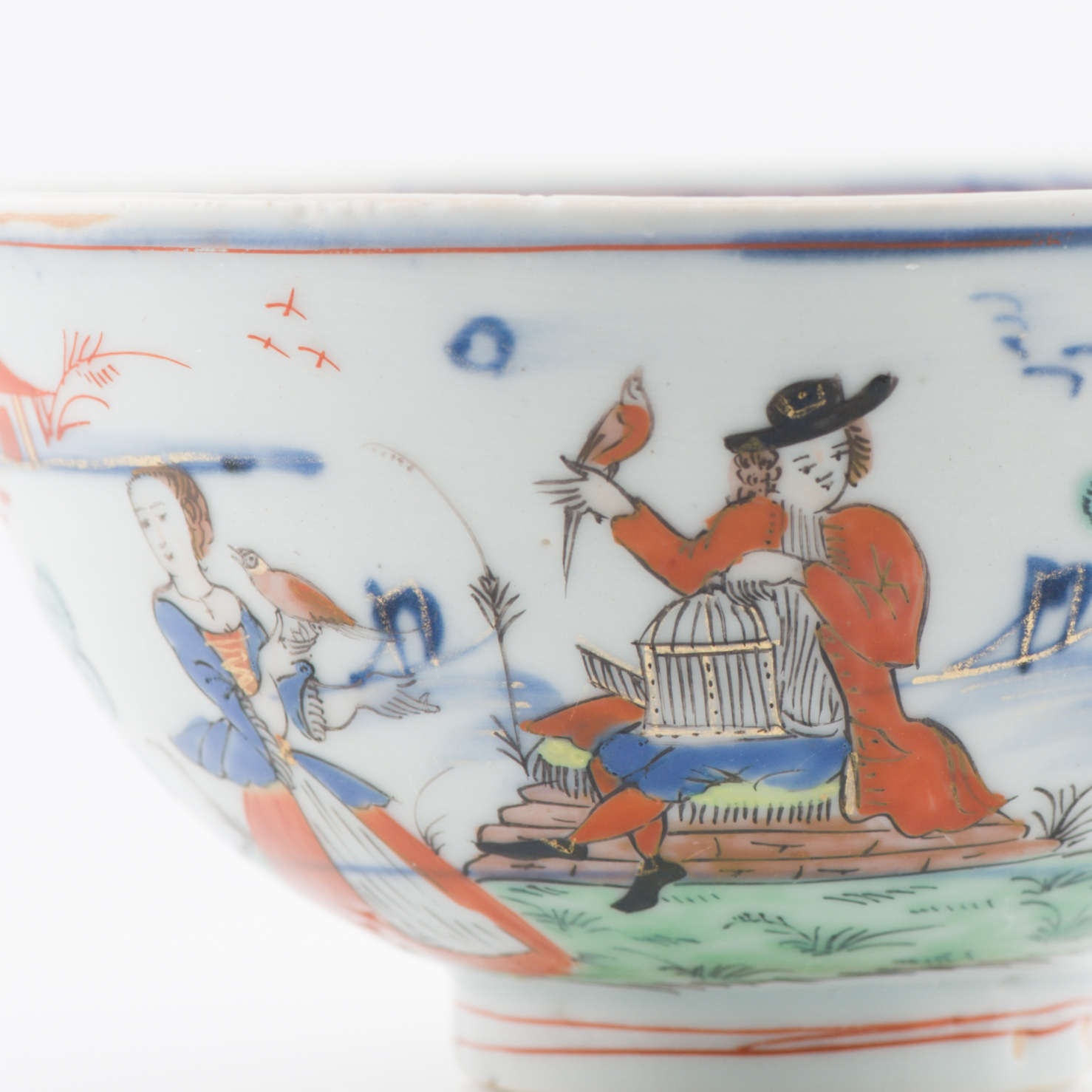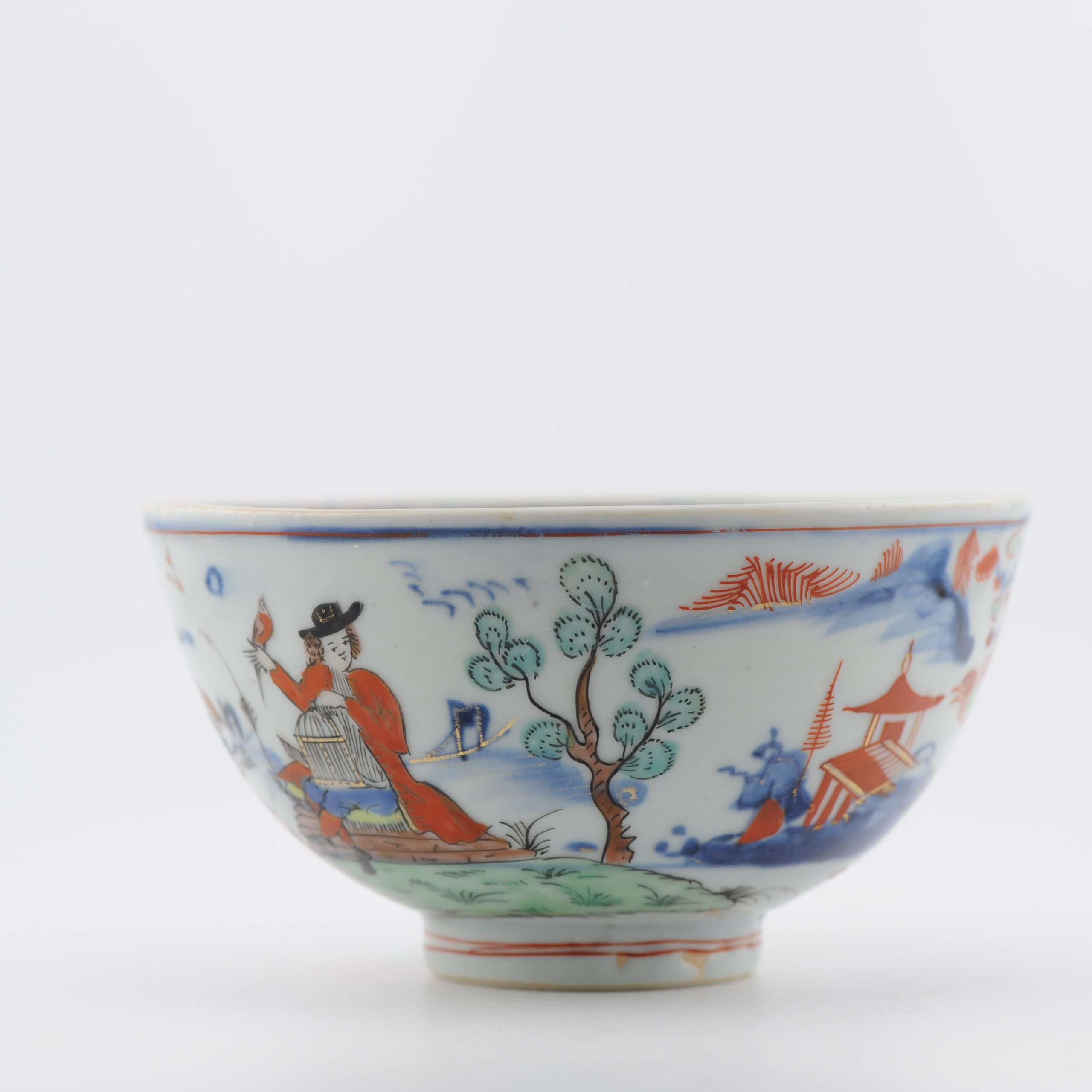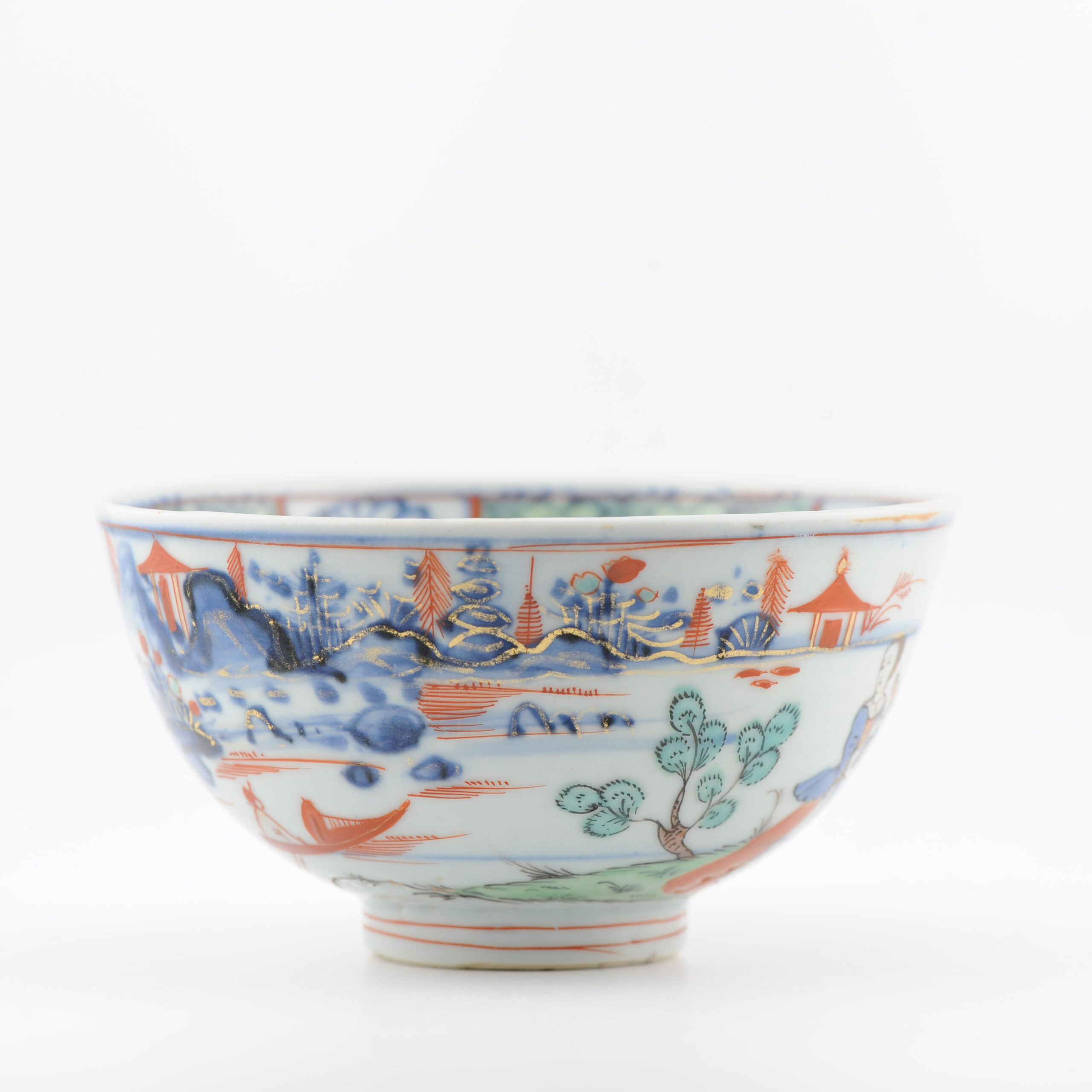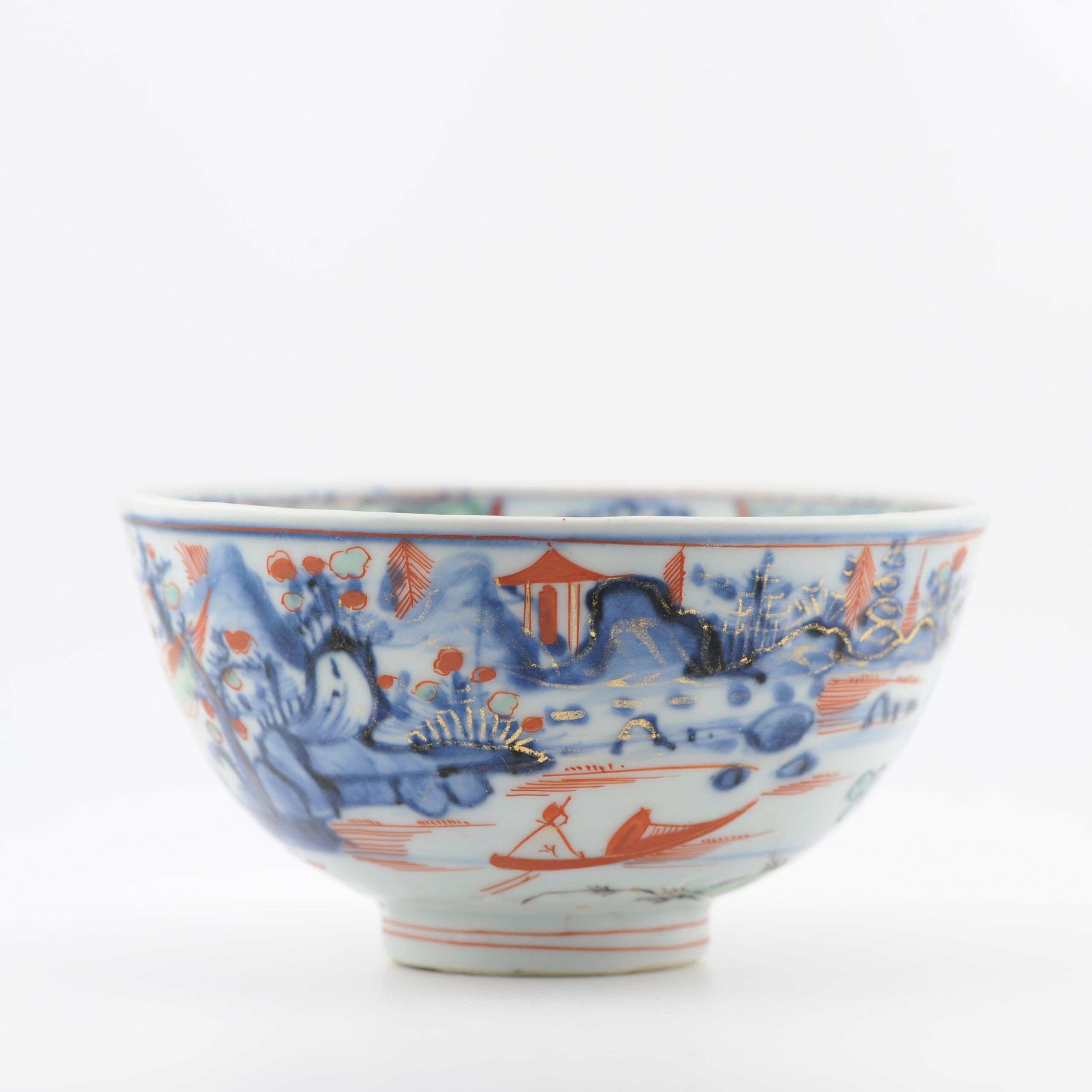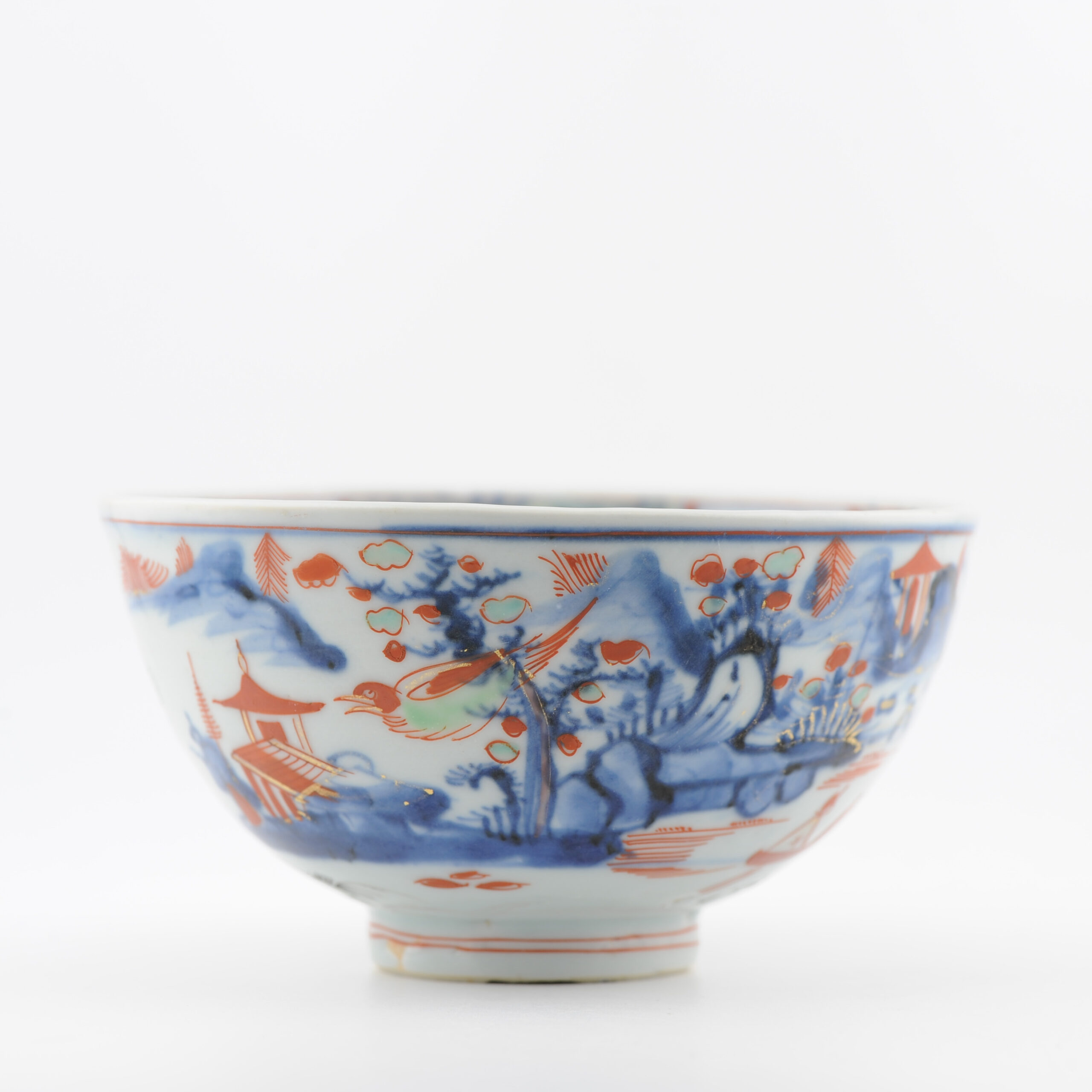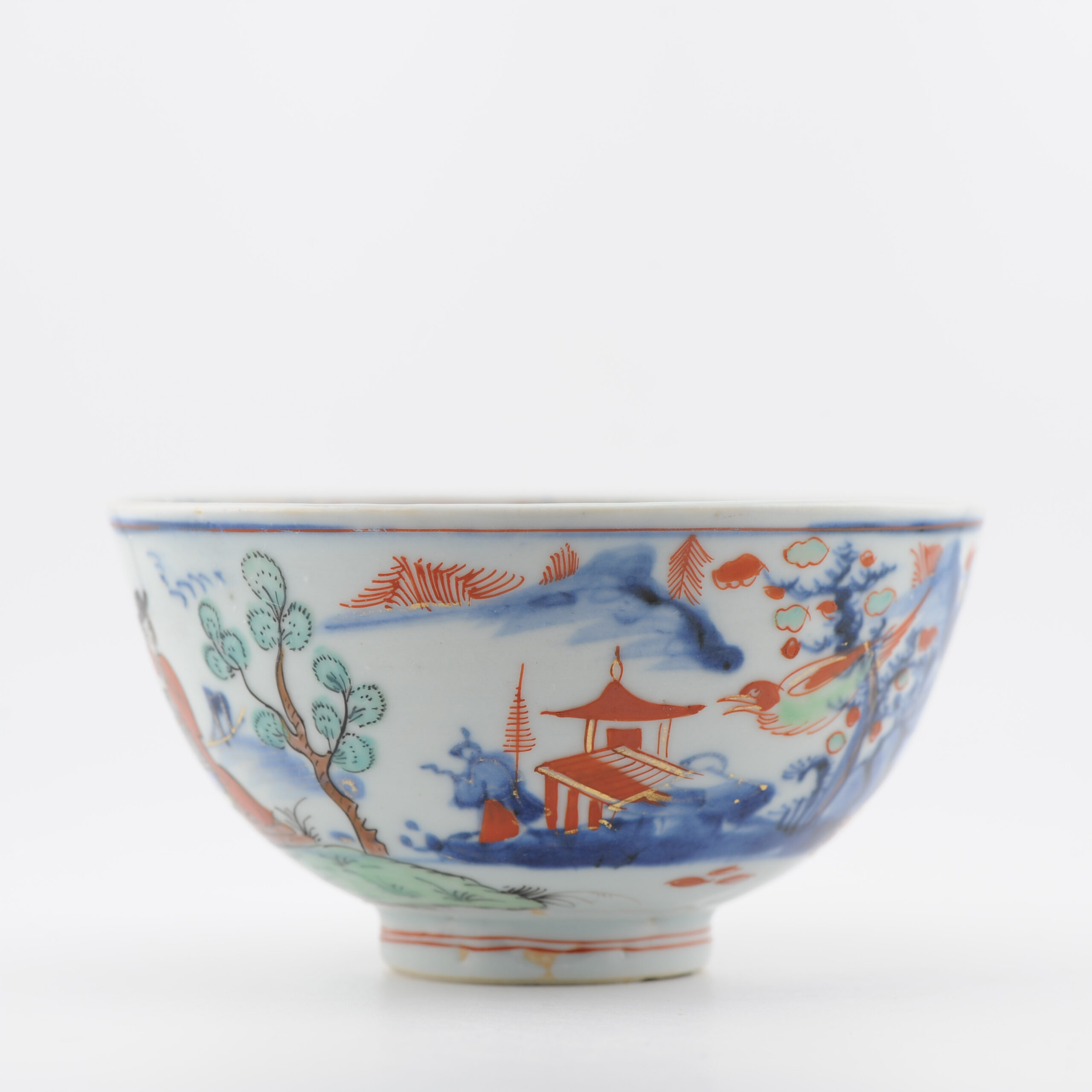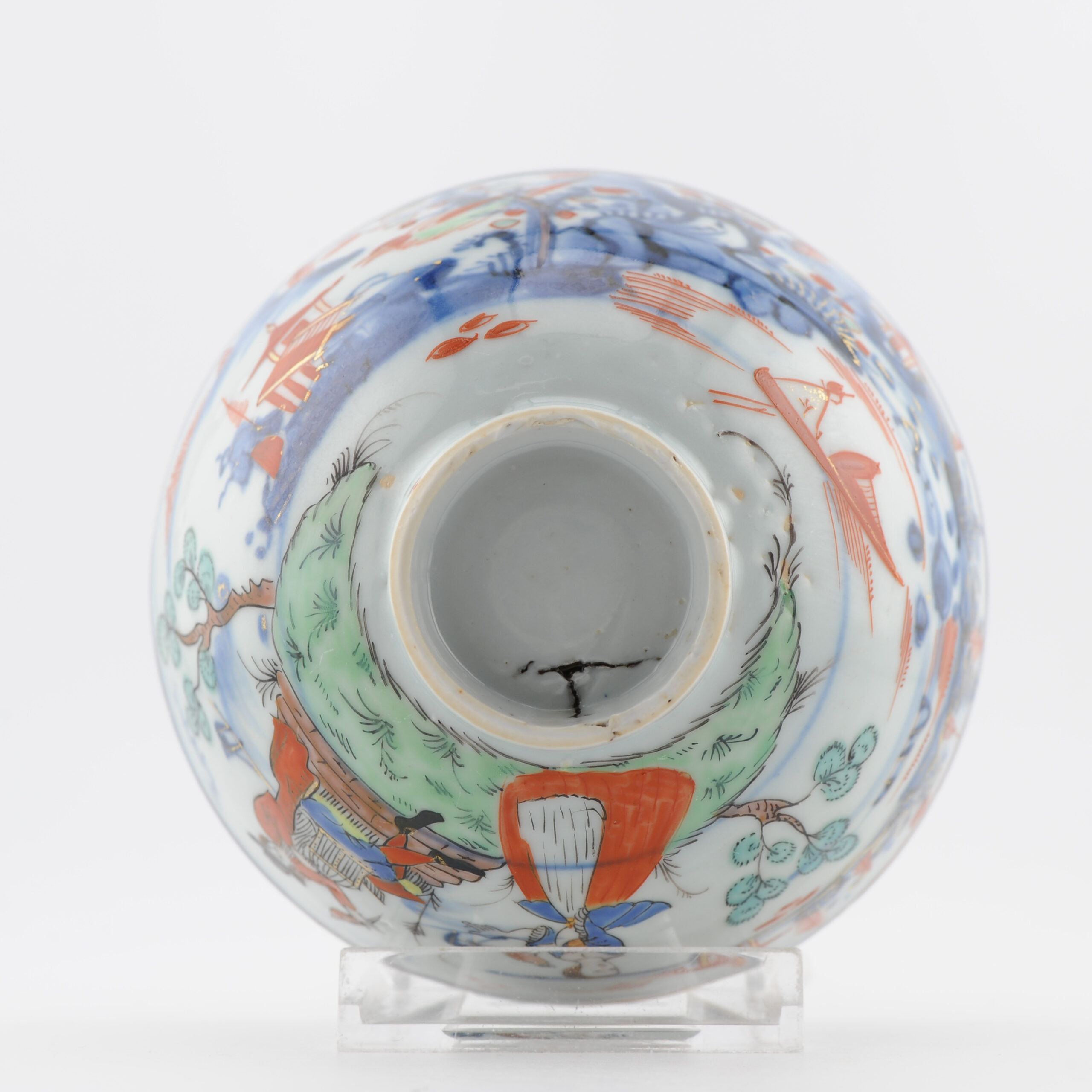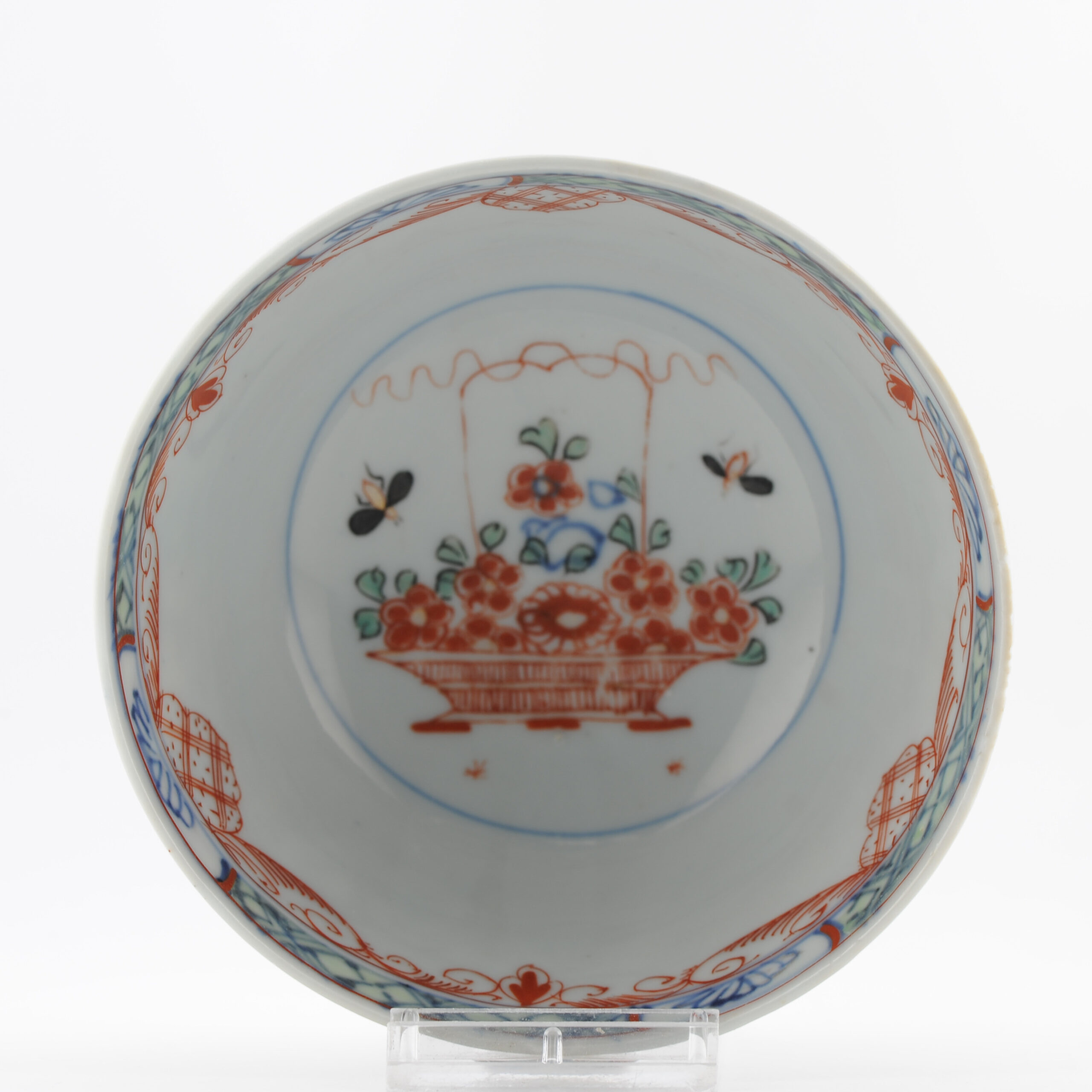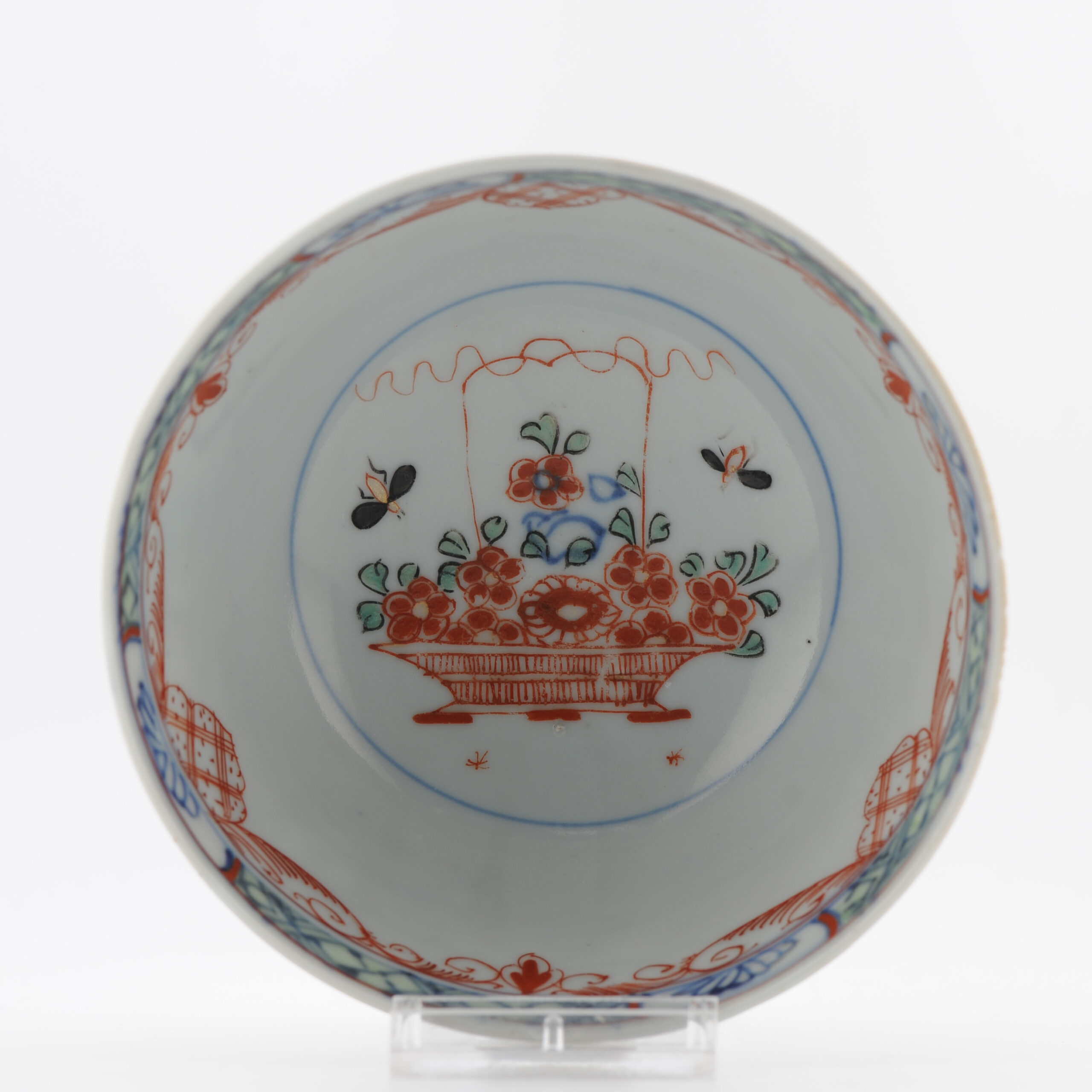1369 Antique Chinese Landscape Bowl Amsterdam Bont Bowl with a Man and lady and bird cage. Underglaze Blue Overdecorated
Description:
1369 Antique Chinese Landscape Bowl Amsterdam Bont Bowl with a Man and lady and bird cage. Underglaze Blue Overdecorated
Diameter: 112mm approx
Period:1720-1740
Code:150
Provenance: Venduehuis Den Haag – Collectie Dirk van Duivenbode (1950-2023), HilversumIn European art of the 17th and 18th centuries, the image of a man with a bird and an open birdcage, often with a woman beside him, carries symbolic meanings related to themes of seduction, sexuality, and freedom. This iconographic motif is frequently seen in genre paintings, especially in Dutch and Flemish art, and was often used to convey moral or ambiguous messages.
Meaning of the Bird and the Cage:
- The Bird as a Symbol of the Soul or Freedom:
- In some contexts, the bird symbolizes the human soul or spirit. An open cage can then suggest the liberation of the soul or a desire for freedom.
- The Bird as a Symbol of Virginity or Innocence:
- The bird was often associated with innocence or virginity, particularly for women. If the cage is open and the bird has flown, it can signify the loss of virginity or moral decay. The open cage suggests that the woman has “taken her freedom” or has been seduced.
- Erotic and Sexual Symbolism:
- In many paintings from this period, birds, and particularly the act of letting them escape from a cage, are metaphors for erotic seduction or sexual acts. The man holding the bird or opening the birdcage often represents the male role in seducing the woman.
- The woman beside the man may play an ambiguous role: she might be passive, implying she has already been seduced, or actively engaged in the flirtation, depending on her posture and expression.
Interpretations in Genre Painting:
- Moral and Didactic Message: Many of these depictions had a moral lesson, where the behavior of men and women was judged according to the norms of the time. The open birdcage, for example, could serve as a warning against promiscuity or licentiousness.
- Flirtation and Humor: Some paintings used this symbolism as a playful reference to daily social interactions between men and women. It could be a lighthearted, humorous reference to how relationships and sexual dynamics were viewed in the 17th and 18th centuries.
Conclusion:
The combination of a man with a bird (or an open birdcage) and a woman next to him often refers to sexual seduction, the loss of innocence, or the tension between freedom and constraint. The exact interpretation can vary depending on the context of the painting and the posture of the figures, but the erotic and moral connotations are usually the most prominent underlying themes.
Additional Information
| Type | |
|---|---|
| Region of origin | China |
| China dynasty period | Qing (1661 – 1912) |
| Decoration type colour | Amsterdam Bont |
| Century | 18th century |
| Size | 12cm< |
